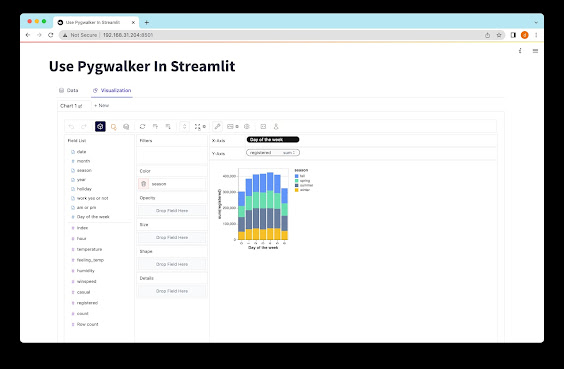RATH: Open Source Tool that Transforms Your Data Analysis Experience
If you're a business owner, entrepreneur, or data analyst, you know how challenging it can be to manage and interpret large amounts of data. Between different data sources, software applications, and analysis tools, it can be an overwhelming task to extract valuable insights from datasets. That's where RATH comes in.
RATH is an open-source tool that provides a streamlined workflow for data analysis. The platform enables users to connect to multiple data sources, including databases, files, and web services, and visualize complex data in an easily understandable and customizable Dashboard.
With RATH, users can quickly and easily build interactive dashboards that can be shaped to the specific needs and requirements of their organization. The tool provides an interface to the user to manipulate data, apply data transformations, define metrics, and design filters and calculations to build rich and user-friendly Data Visualization Dashboards.
RATH's Dashboard Designer enables the end-users to create and modify charts, graphs, and tables easily. The tools provided by RATH to create dashboards are intuitive and straightforward, making it easy for Octanalysts and Business users alike to configure professional and cutomize Data Visualizations without much effort.
One of the unique features of RATH is its powerful Augmented Analytics engine. The engine uses machine learning algorithms and Artificial Intelligence to analyze complex data sets, identify patterns, insights, and provides causal inferences that will help drive data-driven decisions. The engine automatically produces an Analytical Report after analyzing the data, which can be easily shared with team members or decision-makers.
RATH's augmented analytics engine is designed to support a range of users, from novice to expert data scientists. With the engine's capabilities, users can quickly understand the relationships within the data and identify insights that might be hidden deep within the database. The engine can also provide analytical summaries of data, predicting values, detecting anomalies and patterns, automatically segmenting data, and generating forecasts that can be used to make better-informed decisions.
RATH is built using an agile methodology that has been customized for the open-source community. The tool is designed to be modular, extensible, and adaptable to different data analysis needs. The platform is written entirely in Python, a well-known and accessible programming language, making it easy for developers to customize or extend the functionality of the tool according to the project's requirements.
One of the key advantages of using RATH is that it is open source. This means that the tool is freely available, users can download it and run it locally on their machines, and developers can contribute to the tool's development by integrating it with other software tools or developing plugins. RATH's open-source nature also means that users gain access to the community that contributes to the tool's development, which can help drive its innovation and improve its quality and reliability.
In summary, RATH provides an open-source, user-friendly, and powerful platform for automated data analysis, supporting rich data visualizations, and enabling decision-makers and analysts to extract valuable insights from complex data sources. Its modular and extensible architecture, augmented analytics engine, and flexibility make it an ideal solution for businesses, government organizations, and individuals looking for a versatile and customizable data analysis tool. Whether your data analysis needs are simple or complex, RATH can undoubtedly help streamline your workflow and improve the quality and accuracy of your data analysis.

Comments
Post a Comment